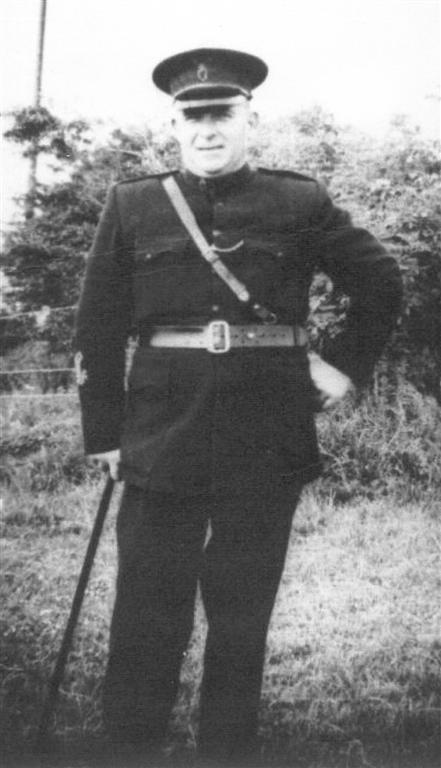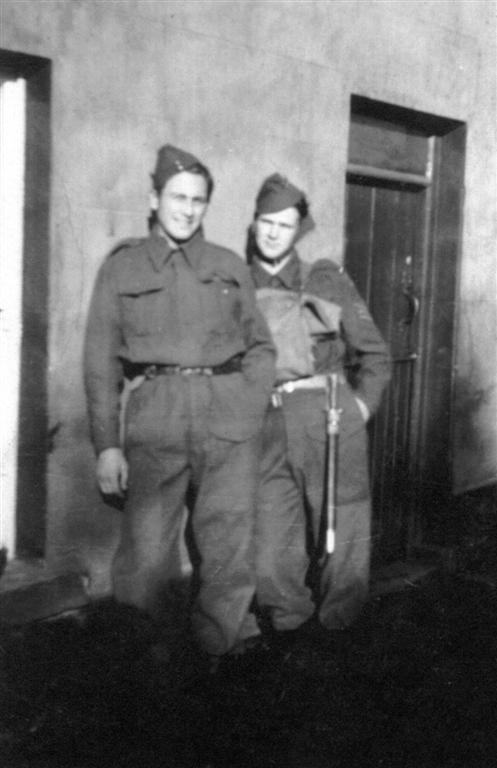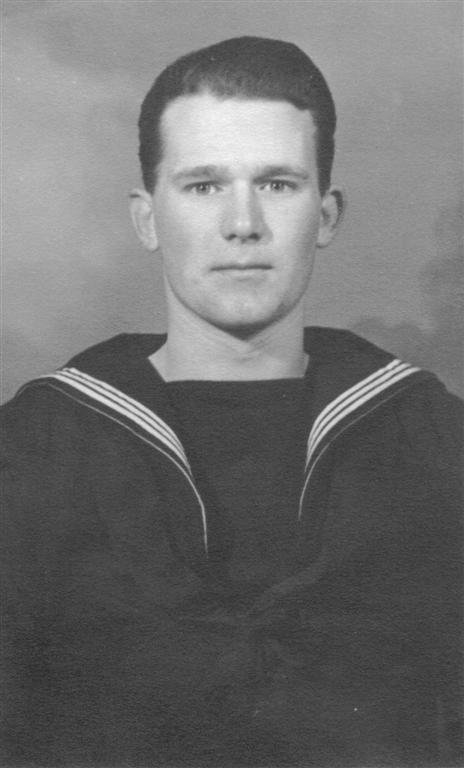Chapter
6 - The First Officer Commanding E Company
County
Londonderry has had a long tradition of Militias with the sons of
former members volunteering to continue that tradition. The
Lapsleys from Donegal are such a family with a long history of
service to the Crown. George Lapsley settled in Coleraine and
became the first Co. Londonderry resident to serve in the UDR.
He started his UDR career in November 1969 by recruiting
the volunteers required to replace the B Specials who were to be
stood down at midnight on 31 March 1970. George then went on to
be the first Second-In-Command of 5 UDR and later to be the
Officer Commanding (OC) E Company from 1971 until 1976.
The
RIC
His
father was called James Porter Lapsley, the second son of an St
Johnston, Co. Donegal farmer. The farm was too small for other
than the eldest son. Because of this situation the second and
third sons in all farming families had to leave home and find
other employment. Many joined the Royal Irish Constabulary (RIC).
So James Porter Lapsley left the farm to his elder brother George
and travelled from Donegal to Dublin to be trained as a
policeman.
Photo
13 District
Inspector JP Lapsley RUC

Waterford
was the first station he was posted to. That was on the South
East Irish coast. He met his wife whilst he was there.
She worked in one of the big bookshops in Waterford town.
Her grandfather was called John Duke. He was the Chief Huntsman
to the Marquis of Waterford’s Curraghmore Hunt in the 1870s.
Waterford is much the same in many ways as Coleraine.
There is a river flowing through the town. It also has a
boathouse, a railway station and two nearby beaches, Tramore and
Dunmore East.
During
WWI at least 35 per cent of the male population of Waterford
volunteered for service in the British army.
RIC
Disbandment
In
1919 the Irish Republican Army (IRA) started doing exactly the
same as they did in the 1970s. They bombed, shot, murdered,
intimidated the population and then lied their way into
government.
When the RIC was disbanded James Porter Lapsley had to
leave Southern Ireland for his own safety. His wife remained in
Waterford. As James was making his way to the docks he was
attacked. The ex-RIC officer beside him was shot dead.
James continued on his way to the docks where he boarded a
Royal Navy destroyer detailed to rescue all RIC from the
Waterford area. He often recalled how he wished he had been shot
because he was seasick all the way from Waterford to Belfast.
The
RUC
In
1923 James applied to join the Metropolitan Police and the RUC at
the same time. He was accepted into the Metropolitan Police at
first but the next day he was accepted into the RUC.
When George Lapsley was born he remained in Waterford with
his mother. They lived in her parent’s house. Her father was
called Sam, a larger than life character, a twenty-two stone
auctioneer who liked his Guinness.
Move
to Belfast
In
due course the Lapsley family moved to Belfast and lived on the
Ravenhill Road. James Lapsley was stationed at Mountpottinger. At
that time George was five years old and he would follow his
father around. There were many riots in Belfast at that time and
George remembers all the cobble stones (Peevers) being torn up
and used by both sides to stone each other.
Move
to Eglinton
Eventually
the Lapsley family moved to the police house in Eglinton, Co.
Londonderry after James was promoted to Sergeant.
World
War II
At
the start of WWII George was aged sixteen. He altered his date of
birth and became eighteen so that he could join the Local Defence
Volunteers. He went to Hollywood Barracks and trained as a
Vickers Machine Gunner.
Photo
14 George on the right

Uncle
George joined an Anti-Aircraft unit in the Supplementary Reserve.
Lots of Donegal men joined up and were posted overseas for the
duration of the war.
At that time James Lapsley was posted to Victoria Police
station as the Head Constable. He would go to Donegal and work
the farm on his days off. When his brother George came back from
the war, James handed him back the farm. By now, it was twice the
size it was before he left. Eventually James moved to Clogher as
the District Inspector.
War
Service
During
the war years George Lapsley went to Foyle College and then on to
Magee University for two years. One day in 1943, while playing
rugby in Belfast, he went to Clifton Street and joined the Royal
Navy.
Photo 15 George Lapsley 1943

Still in 1943 he went on to Devonport. There was a call
out for volunteers to go to Australia and George volunteered. It
was a con because the RN actually wanted men for Burma and
Ceylon. Prior to the departure of the volunteers they trained in
Ceylon as RN Landing Parties using the flat bottomed landing
craft. These craft were then deployed along the Burma coast as
far as Rangoon.
After
the War
At
the end of the war George came home to Northern Ireland. He
enrolled on a Teacher Training course and went straight into
teaching.
In 1957 a couple of friends approached George and said
that the local Territorial Army (TA) at Coleraine were short of
officers. He became a Troop commander in the Coleraine Battery.
Many of the WWII veterans from the original Coleraine Battery
were still serving. He retired from the TA in October 1969 at the
age of 46.
The
Civil Rights Front
At
the time George retired from the Coleraine Battery the
Protestants in the Republic of Ireland accounted for only three
percent of the population. They had been left without middle
class or political representation. During the same period the
Roman Catholic minority in N. Ireland had expanded from 28 per
cent to 40 per cent and benefited from the relative prosperity
there.
Many middle-class Roman Catholics now had a university
education behind them. With the success of Dr Martin Luther
King’s approach to protest and the European student uprisings
in mind, they decided to demand Civil Rights for the Northern
minority.
The chaos that followed these demands would lead to the
mustering of another Ulster militia. George Lapsley had a very
important role to play in that.